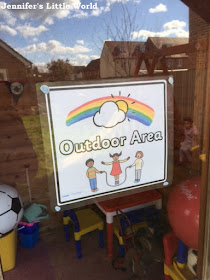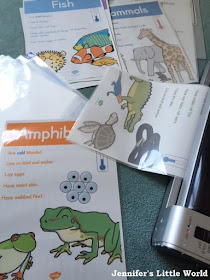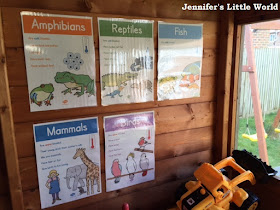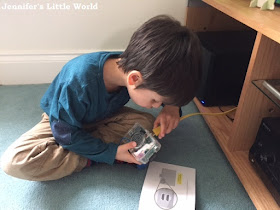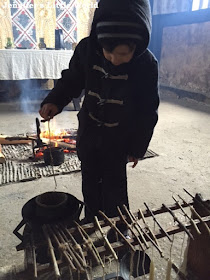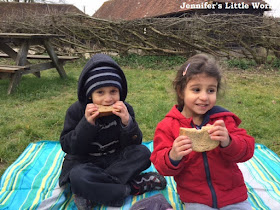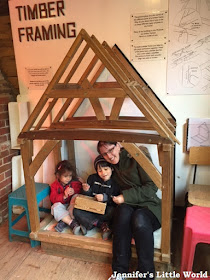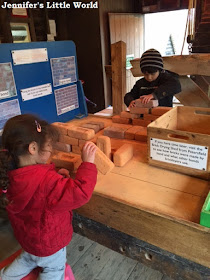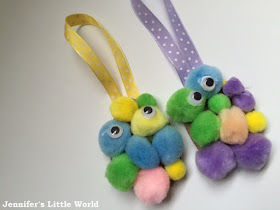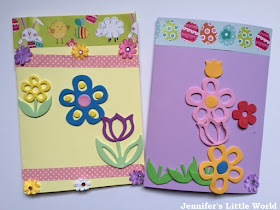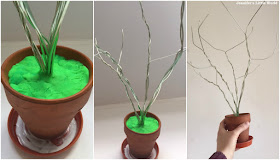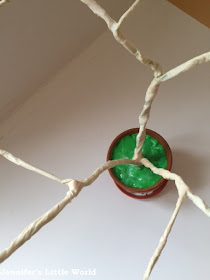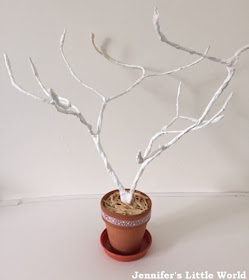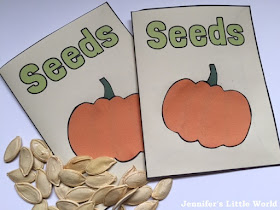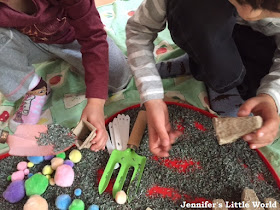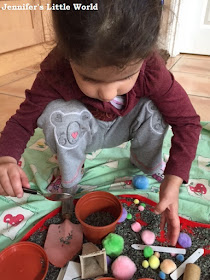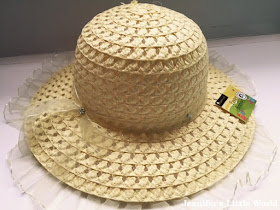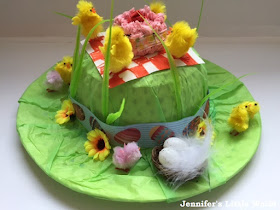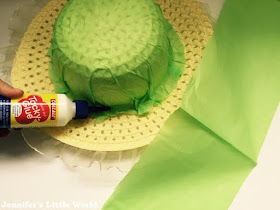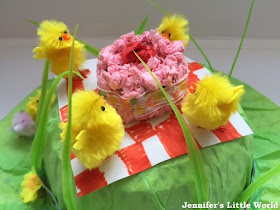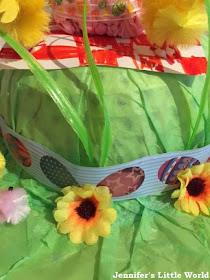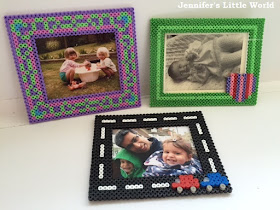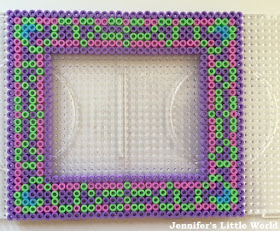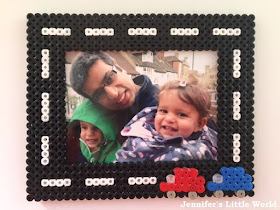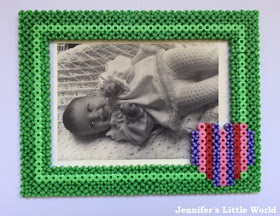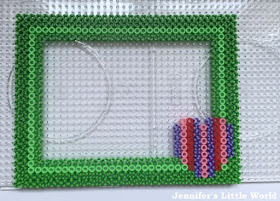Recently, Emma from
Adventures and Play invited me to join in with her
Tuff Spot A-Z Challenge. During March and April 2015, every weekday a blogger shared a blog post on either their own site or as a guest blog on the Adventures of Adam featuring sensory play based around a different letter of the alphabet. If you're not familiar with Tuff Spots here's an example -
Tuff Spot
(affiliate link) - it's basically a large mixing tray which you can use for all sorts of messy play and activities.
For our Tuff Spot play I chose
G for Gardening. Of course, indoor gardening play isn't a substitute for real gardening, but while it's still too early in the season to start actual planting outdoors, we've been doing the next best thing!
I'm bending the rules of the challenge a little bit, as we don't actually have a real Tuff Spot. Instead, for our large scale sensory play I use a big tray, which is the lid from our outdoor sand and water table. It has a nice rim around the edge to keep everything reasonably contained, and it's the perfect shape for two children to use at once. I usually place it on the floor on top of an old table cloth, or else I have an old shower curtain that I use if we are playing with wet materials. You can also see it in action as
Dinosaur Island.
The base material for our sensory play was cheap rice which I dyed black. It's very easy to dye rice, just mix it all up with some food colouring and leave to dry for a very short while. Dyed rice keeps for years and you can always reuse it - even if lots of different colours get mixed together the children don't mind at all!
One thing I've learned about sensory play is how much little children enjoy spooning and mixing different materials. So I provided plenty of plant pots for them to fill. There's a little terracotta one (obviously keep breakable ones for older children to use!), a few plastic ones and lots of new cardboard seedling pots. I put in a couple of our child-sized garden tools, and I also added some spoons for easier filling. I also added some seed markers and some different sizes of coloured pom poms.
Then I gathered together some old pumpkin seeds still going strong from my
Halloween sensory tub and made some little seed packets to present them in. For the seed packets I used this fab printable from Twinkl -
Create your own Seed Packets (free download). There are several different packets to choose from, and they have a blank front so you can add your own pictures. I found some pumpkin pictures in this Twinkl resource
Editable Halloween Pumpkins (free download), and I printed off a couple of pumpkins to glue to the front of the seed packet.
Finally I once again turned to Twinkl to make some simple cards to use for matching game. I created this resource myself using the Twinkl Create function which is available to Premium users. I chose a selection of garden themed pictures, printed them out to make pairs and laminated them.
I used the cards with Mia to play a memory matching game, and we hid them in the rice to hunt for pairs which she really enjoyed.
Both children were so excited to see the gardening play all set up, and it reminded me that I should do this sort of play much more often! They both dug straight in, quite literally, and were soon completely absorbed.
Harry was very interested in the seed packets and he took his play very seriously, filling up his plant pot and planting his pumpkin seeds.
He wanted to know how we would remember what had been planted, so I gave him a pen to write the names of the plants on the seed markers. A great way to sneak in some writing practice, and his writing was so neat that he'll definitely be helping me when it comes to writing out the real ones!
On the other hand, Mia's first reaction upon seeing the cardboard plant pots was 'ice creams'! She busied herself with filling the pots up with the rice and popping a pom pom on top to make ice cream cones. Perhaps not quite the play that I had imagined, but I loved seeing her little thought processes at work and she had such fun! She also caught on that the pom poms could represent flowers that had grown, and was busy filling up flower pots. She came home this week from nursery with a real bulb planted in a flower pot and is most annoyed that it hasn't started growing yet, so at least this was some instant planting gratification for her!
I must admit that I had worried that at 6 Harry was getting a bit old for sensory play, but I was wrong. Both children played beautifully together for ages, even though they tended to play their own games independently with the shared materials! They both sat their narrating their own play, yet enjoying the other's company.

